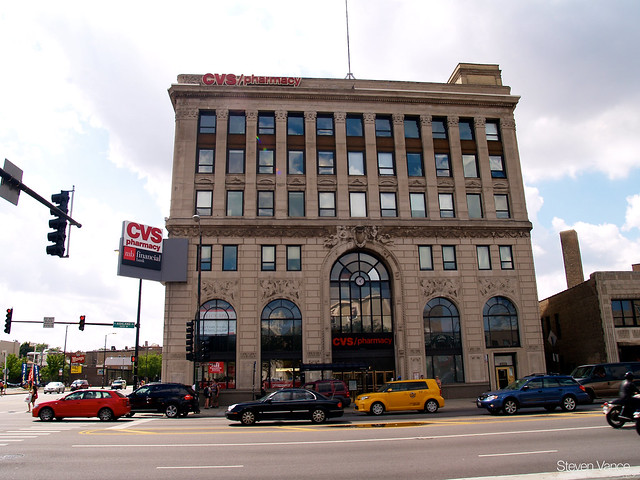Mayor Rahm Emanuel introduced an ordinance last Wednesday that would reduce some barriers to transit-oriented development in Chicago, lowering parking requirements and allowing more density near transit stations. While the proposal is a step forward, there's much more the city can do to ensure that future growth leads to more walking and transit use, not more traffic and congestion.
Current rules discourage walkable growth in Chicago by forcing the construction of parking and limiting how much housing can be built, even in areas near transit stations. This pushes growth to places where people have fewer transportation options and have to drive. As highlighted in a recent report from the Center for Neighborhood Technology, Chicago is falling behind its peer cities when it comes to transit-oriented growth.
The new ordinance would loosen these restrictions, but it could do much more. Here's a look at how it would work.
For residential developments within 600 feet of a CTA or Metra train station – or within 1,200 feet, if the area has been designated a "Pedestrian Street" – half as much parking would be required as in the rest of the zoning district. For non-residential developments in certain districts, no parking would be required, but developers would have to notify the local alderman if they plan to build less than 50 percent what's required elsewhere in the district. Also, for both residential and non-residential projects, one bike parking space must be built for every car parking space that isn't built, relative to the requirements in that district and that project's use.
Developers who want to combine less parking with greater density would have to jump through hoops, taking the project through hearings at the Chicago Plan Commission and the city council's zoning committee.
The ordinance should lead to more walkable development near transit, but there are a few ways it could be stronger. One would be to increase the area that the ordinance applies to. The CNT report recommended creating "transit-oriented development zones" within half a mile of train stations -- more than four times the radius called for in this ordinance in areas that haven't been designated a Pedestrian Street.
Chrissy Mancini Nichols at the Metropolitan Planning Council thinks parking requirements would remain too strict under the proposal. "Why limit to reducing parking by 50% residential and [50-100% for] non-residential?" she wrote in an email. "It should eliminate parking minimums and let the market decide."
Then there's the question of whether the ordinance would apply to areas near bus rapid transit stations. The Chicago Department of Transportation and Chicago Transit Authority will be building BRT on Ashland Avenue from Cortland Street to 31st Street, providing a transit option with more capacity than a normal bus route. That in turn will increase the development potential of areas near BRT stops.
Benet Haller, the city's chief planner in the Department of Housing and Economic Development, said he recognizes that BRT isn't mentioned in the ordinance (which specifies "rail station"), but there's a reason for that: "BRT stations don't exist yet." Despite the current language in the ordinance, the city does see how it could apply to areas near BRT.
Haller noted that DHED is going to be doing a land use study along the proposed Ashland and Western BRT routes, "with a specific focus on the phase 1 part between Cortland and 31st. The basic idea of the study is to discuss the implications of BRT stations [and it] would also look at how to modify the ordinance to support BRT."
Aaron Joseph, deputy sustainability officer in the Mayor's Office, added, "BRT was specifically contemplated. It's in the design phase at this point so we can't put it in the text of this amendment, but all along that is where we're thinking the big impact will be."
Nichols suggested the ordinance's language could be changed to say "fixed guideway" transit station, or it could just include "BRT" and define it.
Joseph thinks it would be easy to amend the ordinance later on, saying that "rail station" could be redefined to include BRT stations. "When BRT enters the lexicon of the zoning ordinance, it can be called out or defined as a rail station, wherever 'rail station' is mentioned, so it can be treated as a rail station," Joseph said.







